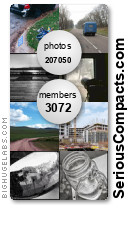My Canon G10 arrived yesterday, and one of the first questions I set out to answer was how it would compare to the Leica D-LUX 4 (Panasonic LX3) at high ISO. Panasonic, widely praised for stepping out of the megapixel race by keeping the LX3 at 10MP, claims that the benefits of large pixels include greater dynamic range and lower noise at high ISO. Based on samples at The Imaging Resource and elsewhere, most seem to agree that the LX3 in-camera JPEGs outclass the G10 in-camera JPEGs at high ISO. However, those who have seen the shootouts on this site know that I am mostly interested in comparing processed RAW files rather than in-camera JPEGs.
In the case of the G10 and LX3, comparisons of processed RAWs are limited by sparse third party support for the RAW files of these two cameras. In this comparison, I've chosen to use Raw Photo Processor (RPP), which uses a modified version of dcraw. RPP is good for this comparison in that it does not apply any sharpening besides that which is inherent in the demosaic process, nor does it apply any noise reduction when that option is disabled. Thus, it's about as close to the RAW data as I can get while presenting a color image comparison for your evaluation. The downside to RPP is that it does not technically support the D-LUX 4 yet, so the black level and colors needed adjustment. Overall, I tried to approximate the black level, white level, and color between the two processed files. The exposure for each photo was the same: f/4, 1/15s. Both cameras were set ISO 800, a 28mm equivalent angle of view, and 4:3 aspect ratio. The LX3 angle of view came out slightly wider. A tripod was used with self timer and image stabilization disabled. After processing the RAW files, the resulting G10 image was downsized using Photoshop Bicubic to match the LX3 file dimension for crop comparisons.
Pardon the choice of teddy bear test scene, but I was experimenting with a "1 Bear under the lamp" system for comparing dynamic range =). Here is the overall scene, with the LX3 resized image on the left, and the G10 resized image on the right: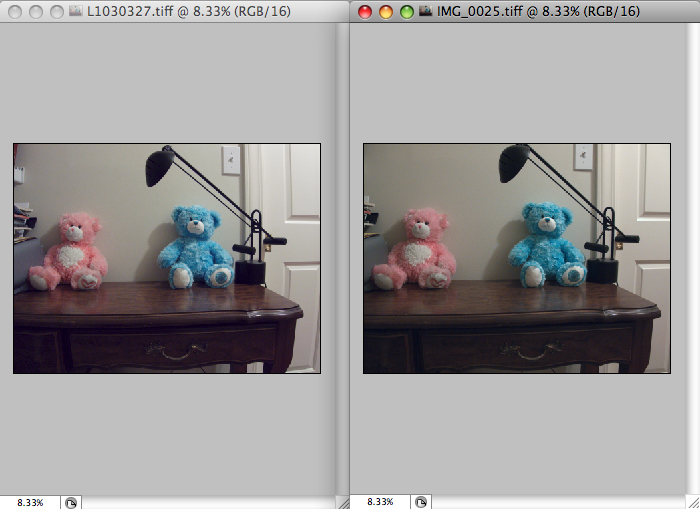
In each of the following 100% crop comparisons, the G10 crop on the right has been downsized to match the output size of the LX3 crop on the left. Differences in color and contrast are due to the RAW processor (and my use thereof) and are not indicative of significant characteristics of these two cameras.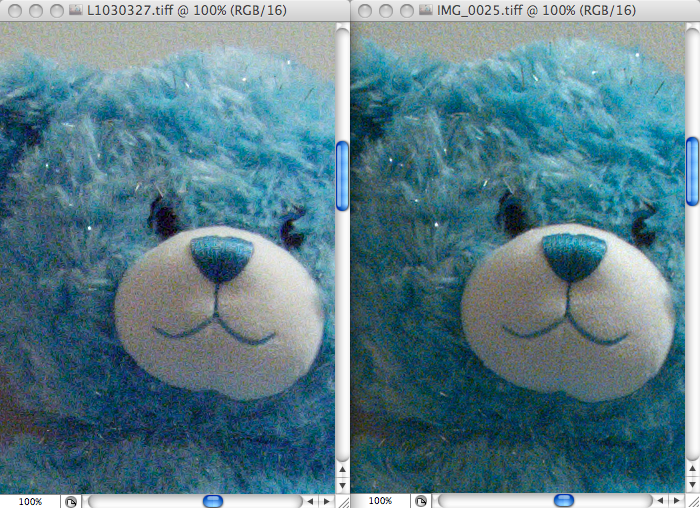

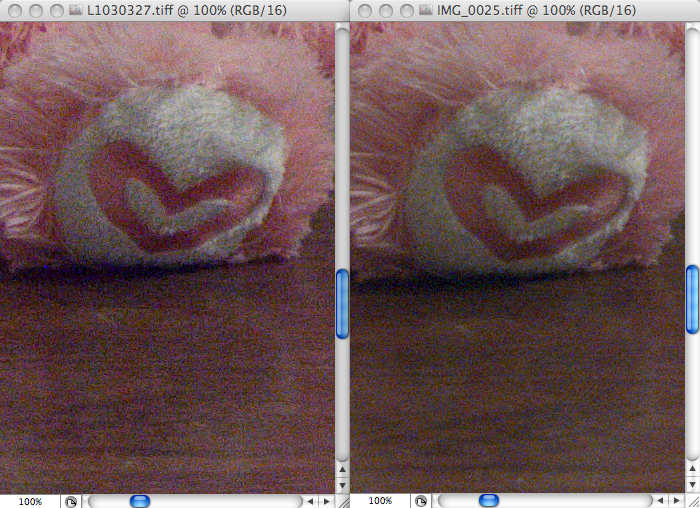

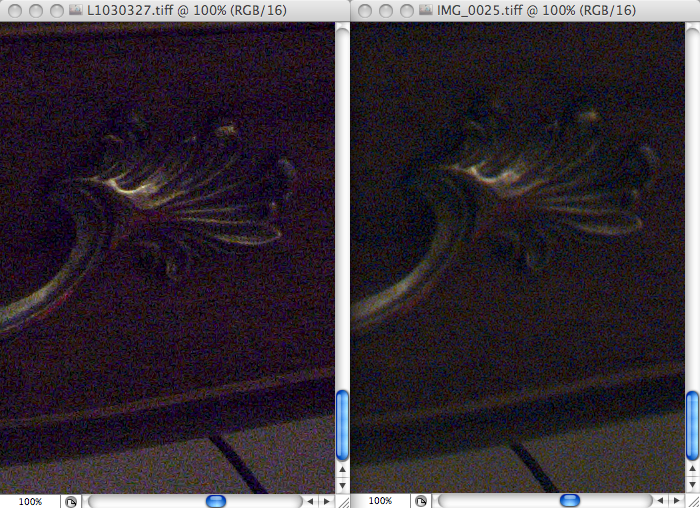

I was surprised to find that there is little difference in either detail or noise between the LX3 and G10 at ISO 800 under these testing conditions. Both files respond very well to subsequent chroma noise removal in Noise Ninja. The RAW files are here in case anyone would like to process them differently:
This is just one preliminary example, but assuming that other examples show the same - that a downsized G10 RAW conversion can match an LX3 RAW conversion at high ISO - then it raises the question as to whether the LX3 is really a better low light camera. The following table shows the minimum f-stop (max relative aperture) at any given focal length and corresponding focal length equivalent for these two cameras:
As you can see, the LX3 has a roughly 2/3 stop speed advantage at any given focal length equivalent. The other thing to consider is which camera has the more effective image stabilization. In comparing the D-LUX 2 (LX1) and G7, I felt that the G7 had the more effective stabilization. The LX3 seems to me to have better stabilization than the LX1, but I don't have a sense yet for how it compares to the G10 in this respect.
Overall, I'd have to say that the LX3 is probably the low light champ, especially with regards to in-camera JPEGs, but the G10 is surprisingly good at high ISO.
Canon G10 - Panasonic LX3 High ISO Comparison
Monday, November 10, 2008
Posted by Amin
![]() Labels:
Canon G10,
G10-LX3 Shootout,
Panasonic LX3
Labels:
Canon G10,
G10-LX3 Shootout,
Panasonic LX3
Canon G10 - Panasonic LX3 High ISO Comparison
2008-11-10T20:33:00-05:00
Amin
Canon G10|G10-LX3 Shootout|Panasonic LX3|
Subscribe to:
Post Comments (Atom)
Recent Posts
-
▼
2008
(254)
-
▼
November
(13)
- Panasonic G1 Review at The Luminous Landscape
- Adapting Lenses to Micro Four Thirds
- Canon Powershot G10 review and Adobe Raw support
- Higher resolution and noise
- Future of compacts
- Canon G10 - Panasonic LX3 High ISO Comparison
- Panasonic LX3 Sensor Analysis by Emil Martinec
- Thom Hogan - Canon G10 vs Panasonic LX3 vs Nikon P...
- Panasonic LX3 Review at DPReview
- Serious Compacts Shootout Poll Results
- Laurence Kim - Panasonic LX3: Parts 2 and 3 Online
- Panasonic G1 Review Posted at DCRP
- Panasonic G1 Now In Stock at Amazon
-
▼
November
(13)

